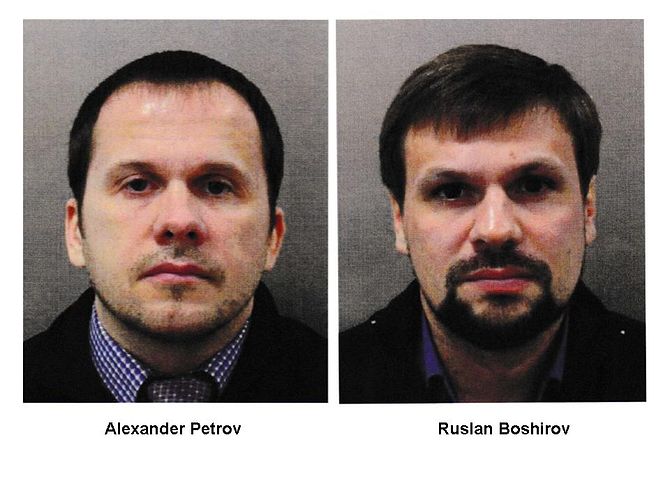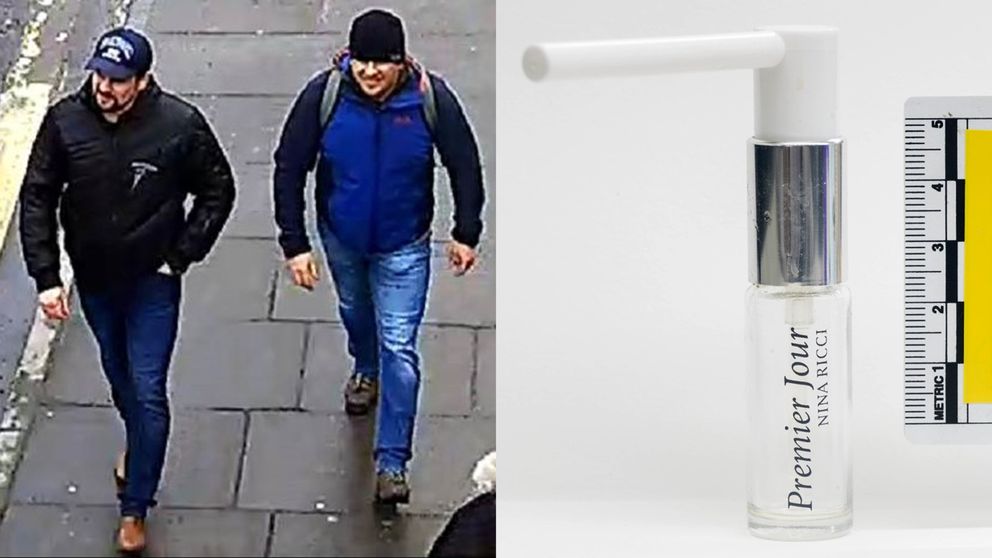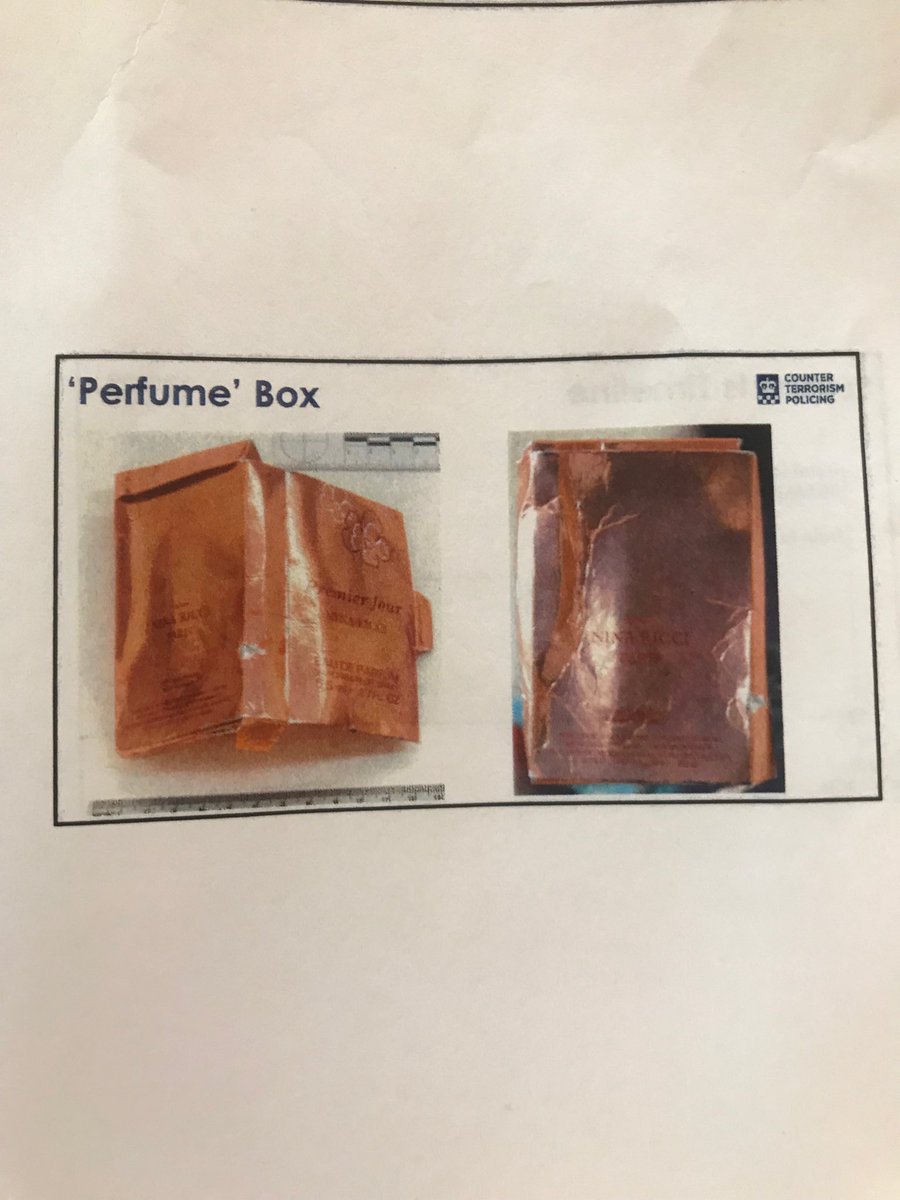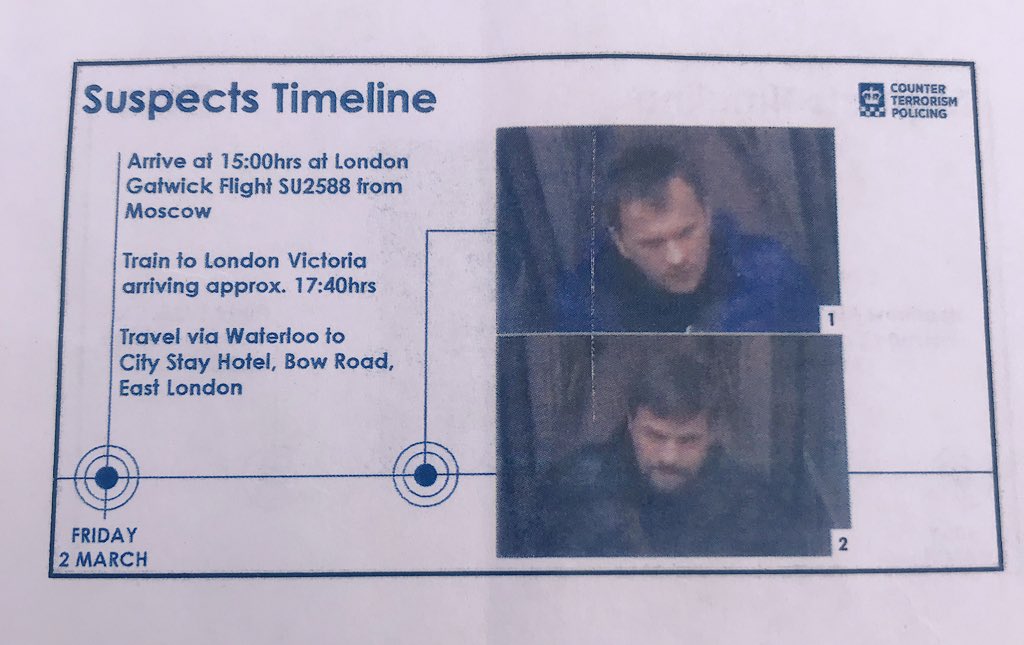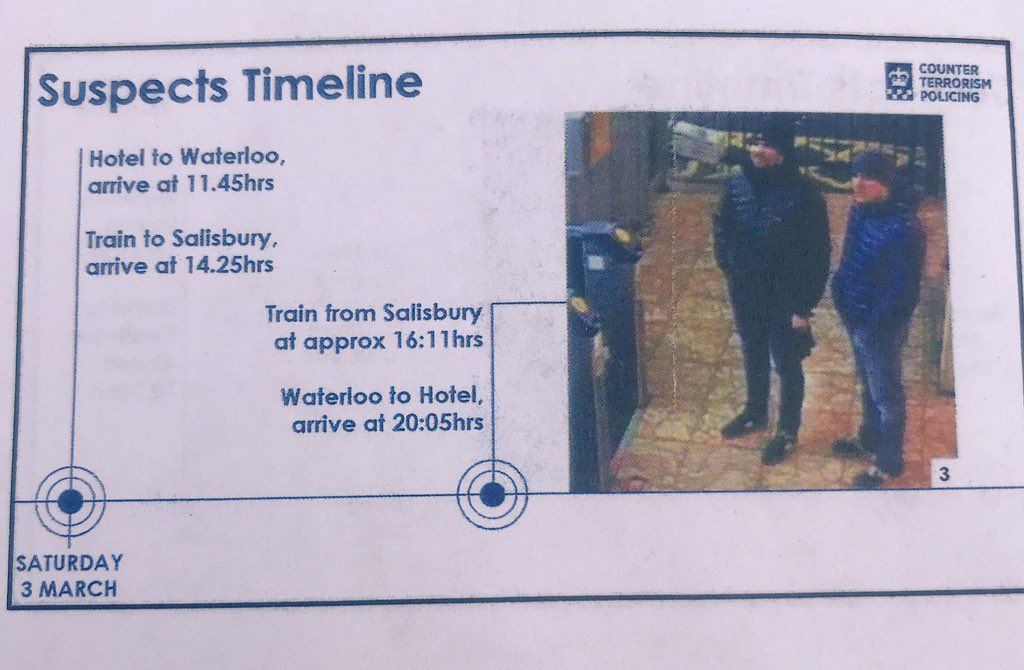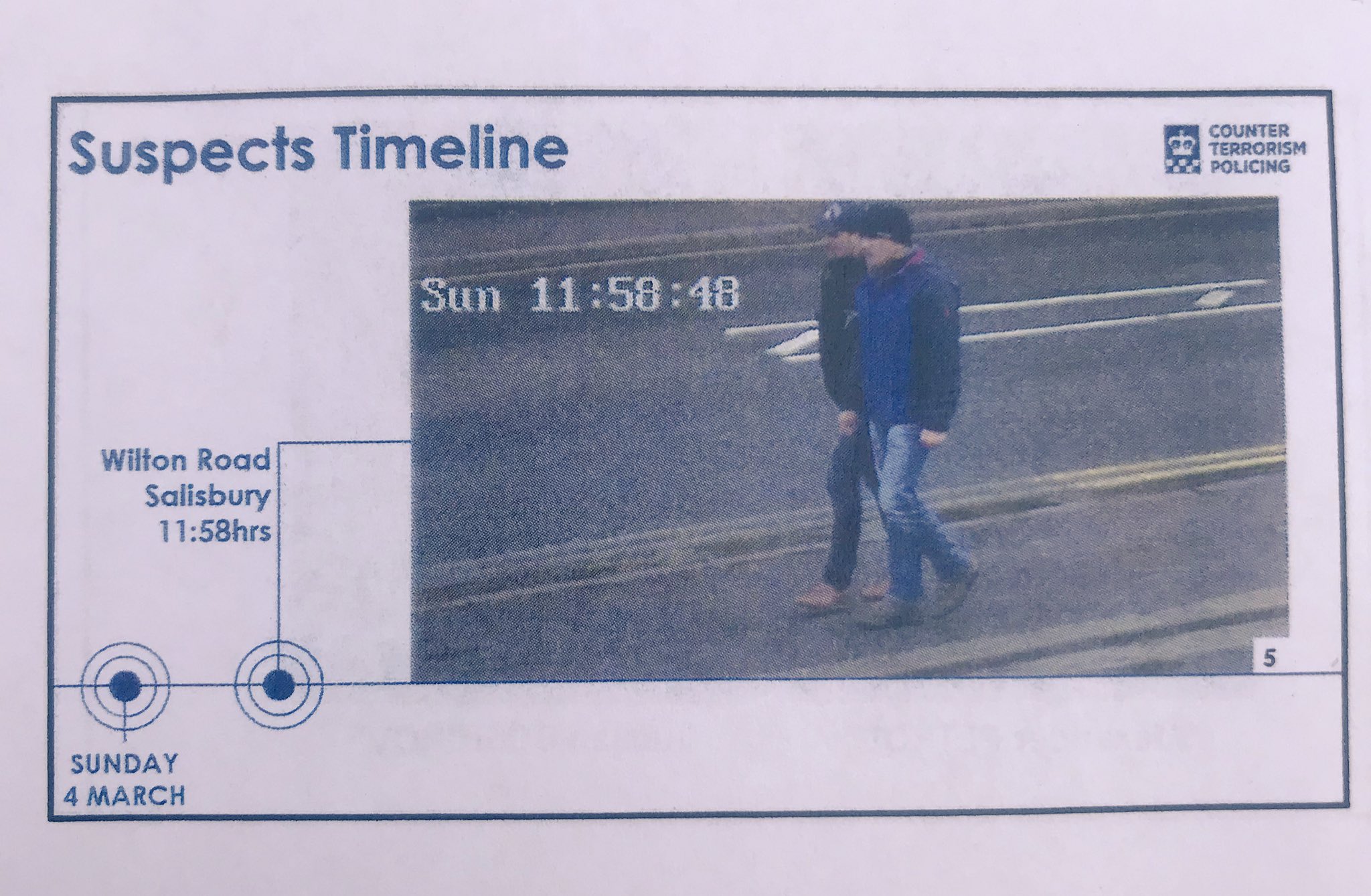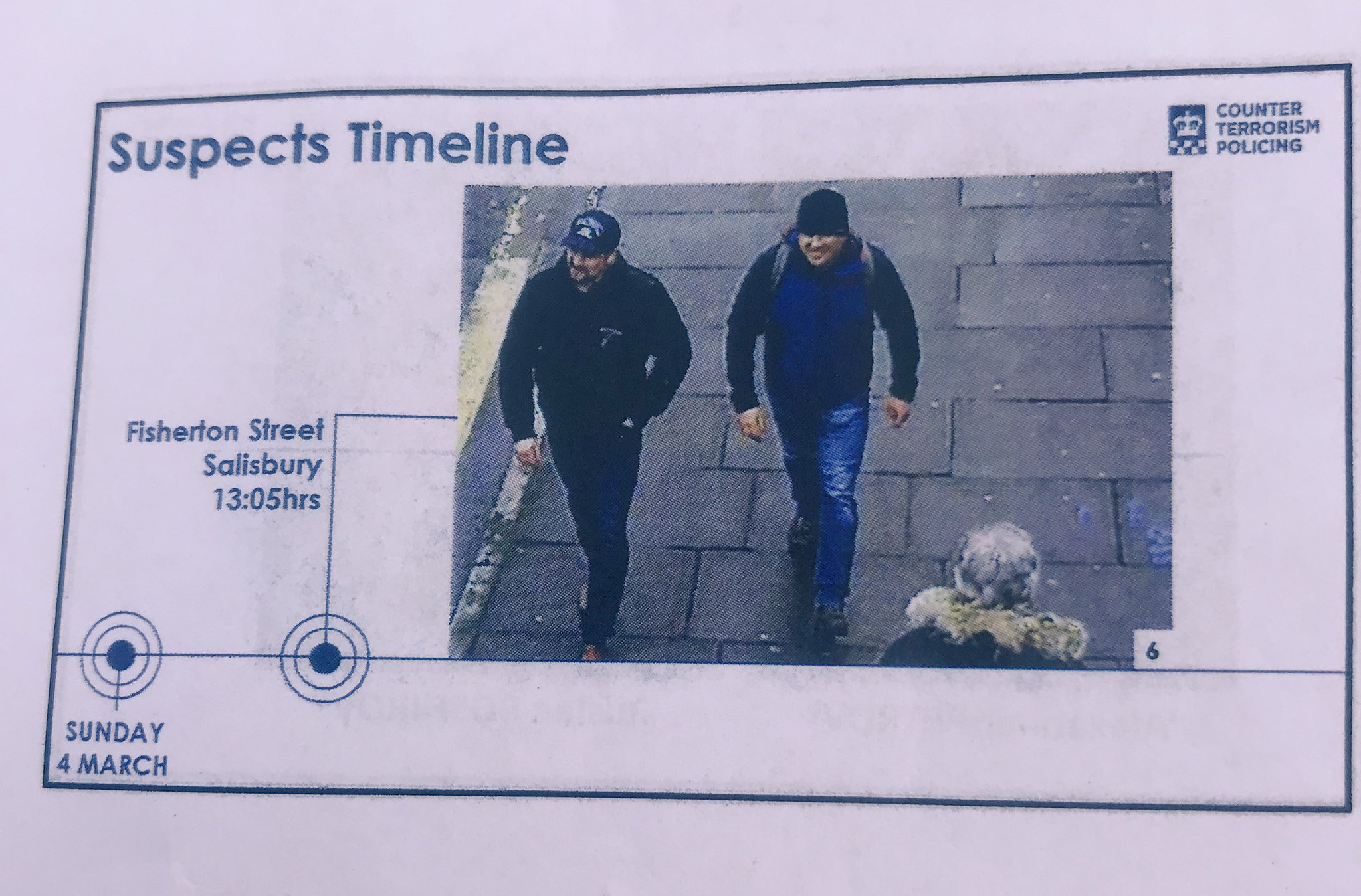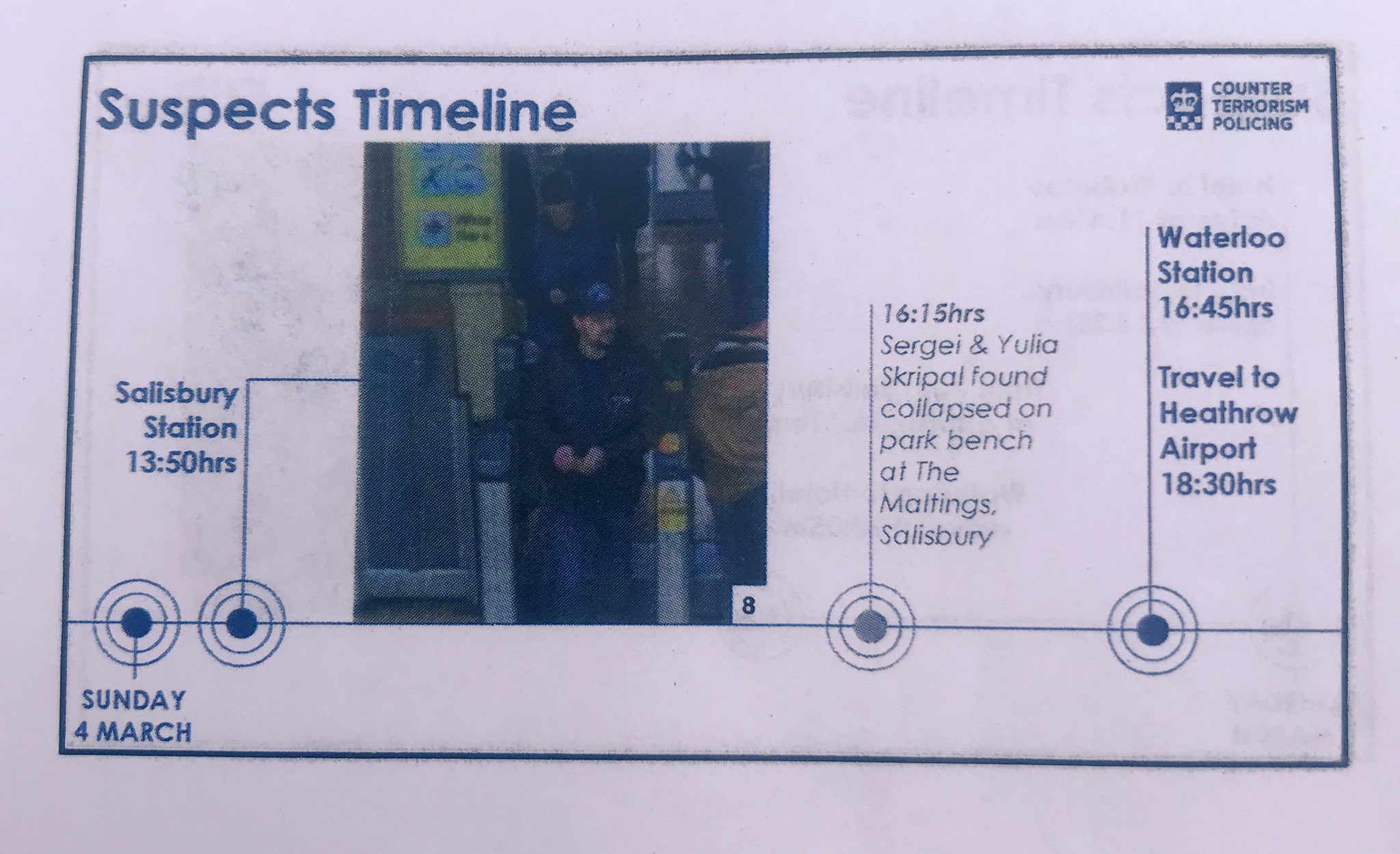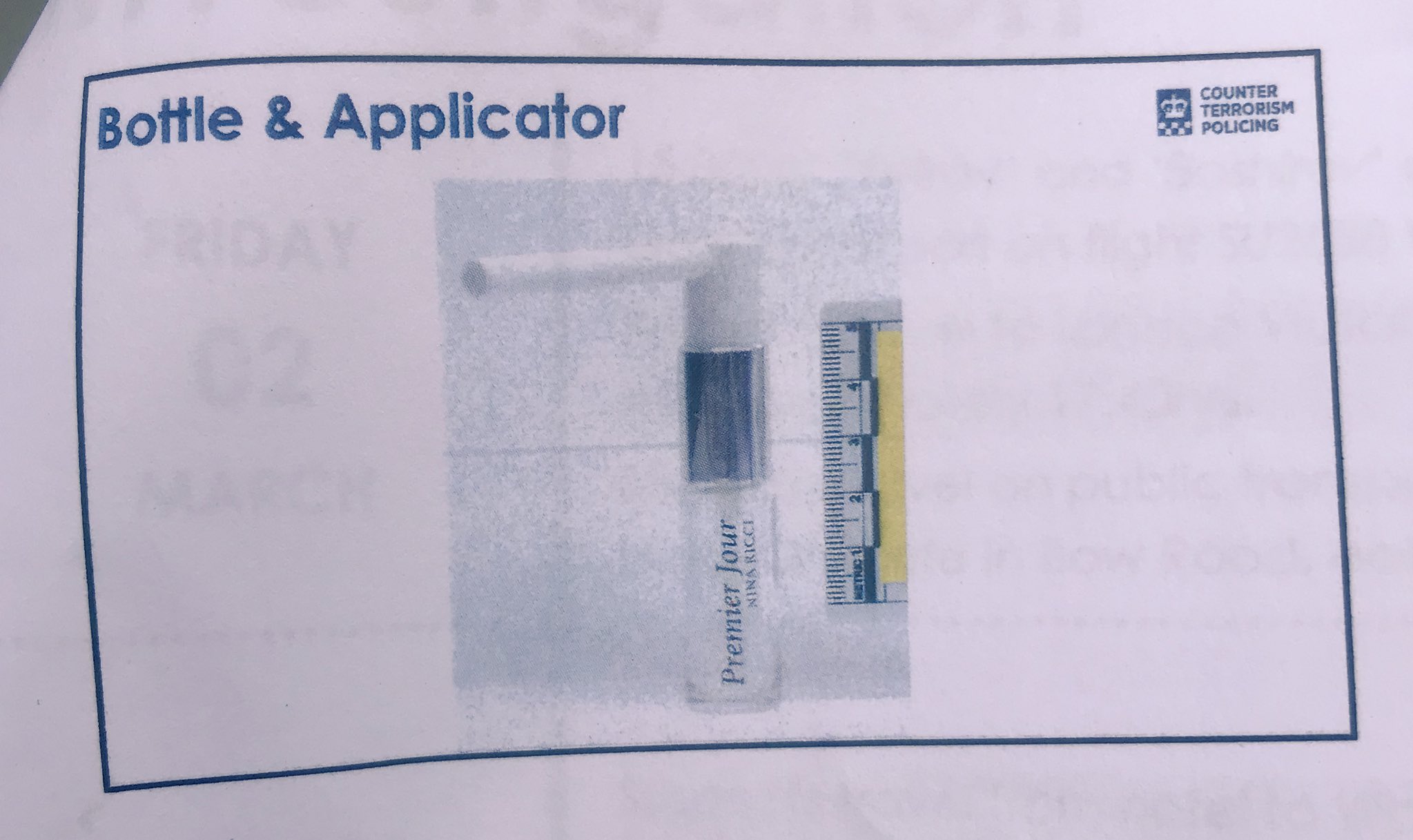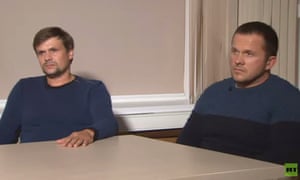Counter-terrorism police release images of two suspects in connection with Salisbury attack
News • Sep 05, 2018 11:15 BST
Image: Alexander Petrov and Ruslan Boshirov
Statement by Assistant Commissioner Neil Basu, National Lead for Counter Terrorism Policing, in relation to the Salisbury and Amesbury Investigation:
Today marks the most significant moment so far in what has been one of the most complex and intensive investigations we have undertaken in Counter Terrorism policing; the charging of two suspects – both Russian nationals - in relation to the attack on Sergei and Yulia Skripal. I would like to thank the Crown Prosecution Service for their independent assessment of the evidence in this case.
This has been a highly complex investigation for UK policing, which would have been impossible without the great staff and abilities of the UK Intelligence Community and the support of the Government.
My thoughts remain with Dawn Sturgess’s family as they come to terms with their loss, the other victims who fell seriously ill after being exposed to a Novichok nerve agent and the people of Salisbury who have shown tremendous resilience throughout.
We said from the start that this investigation would take time as we gathered and assessed all the evidence available to us. Around 250 detectives from across the Counter Terrorism Policing Network have worked on the investigation, brilliantly led by Counter Terrorism Policing South East, and supported by officers from Wiltshire, numerous forces on mutual aid, as well as partners and agencies, ranging from Public Health England to the Defence, Science and Technology Laboratory in Porton Down.
Over the last six months we have meticulously followed the evidence, working closely with specialist forensic teams and scientists, as we have investigated both the attack on Sergei and Yulia Skripal in Salisbury, and the poisoning of Dawn Sturgess and Charlie Rowley. Let me be clear, we have no doubt these two incidents are connected and now form one investigation.
Today’s announcement by the CPS marks the most significant development in this investigation. We now have sufficient evidence to bring charges in relation to the attack on Sergei and Yulia Skripal in Salisbury and domestic and European arrest warrants have been issued for the two suspects. We are also seeking to circulate Interpol Red Notices.
However, our enquiries do not stop here; and today, as well as updating you about the progress of the investigation, I am appealing once more to the public for their help, as we continue to build our evidence in this case.
To recap, Sergei Skripal and his daughter Yulia were found unconscious on a bench in Salisbury city centre at 4.15pm on Sunday, 4 March, after being poisoned by a Novichok nerve agent.
Both Sergei and Yulia spent weeks critically ill in hospital but thankfully are now making a good recovery. Detective Sergeant Nick Bailey, a Wiltshire police officer, was also seriously ill after being exposed to the nerve agent. He continues to make good progress but remains off work. The medical support provided by NHS, Public Health England and expert scientists has been fantastic, particularly given the fact that we have never had to deal with a poisoning by a Novichok nerve agent before in the UK.
Tragically 44-year-old mother of three, Dawn Sturgess died in hospital on Saturday, 8 July. She fell ill on 30 June after being exposed to Novichok and she never regained consciousness. Her partner, 48-year-old Charlie Rowley, was also exposed to the nerve agent and became seriously ill later that day. He received treatment at Salisbury District Hospital over three weeks.
We have now linked the attack on the Skripals and the events in Amesbury which affected Dawn Sturgess and Charlie Rowley. It now forms one investigation. We do not believe Dawn and Charlie were deliberately targeted, but became victims as a result of the recklessness in which such a toxic nerve agent was disposed of. We know that Novichok was applied to the Skripals’ front door in an area that is accessible to the public, which also endangered the lives of members of the public and emergency service responders.
Our rationale for linking the two investigations is primarily based on the following four facts:
- Firstly, our own analysis, and the Organisation for the Prohibition of Chemical Weapons in the Hague, has confirmed that the same type of Novichok was used in both cases.
- Secondly, the nerve agent is one of the rarest chemical warfare agents in the world and its discovery, twice, in such close proximity is beyond a coincidence.
- Third, the manner in which the bottle and packaging has been adapted makes it a perfect cover for smuggling the weapon into the country, and a perfect delivery method for the attack against the Skripal’s front door.
- Fourthly, the lack of crossover between the known movements of the suspects and Dawn and Charlie’s known movements around Salisbury, and the fact that there is no evidence to suggest they have been targeted mean it is much more likely Dawn and Charlie found.
Despite the meticulous and painstaking searches, and although unlikely, it is impossible to guarantee that there are no other materials present in the Salisbury area. Therefore we are repeating the advice from Public Health England that people should not pick up items which do not belong to them. We don’t yet know where the suspects disposed of the Novichok they used to attack the door, where Dawn and Charlie got the bottle that poisoned them, or if it is the same bottle used in both poisonings.
As you have heard, today’s charges relate to the first incident involving the Skripals and Nick Bailey. We continue to liaise with the Crown Prosecution Service regarding the poisoning of Dawn and Charlie.
Since March we have received tremendous support from the people of Salisbury and Amesbury and our many partners, which has been invaluable to the investigation team. Today we are releasing further information and a number of images in the hope that the public can assist us further.
On the 14 March the Prime Minister said there is no alternative conclusion other than that the Russian State was culpable for the attempted murder of Mr Skripal and his daughter. We now need to hear from the public.
I am therefore, appealing for anyone who has information about the suspects named by the CPS today as Alexander Petrov and Ruslan Boshirov to contact police. Both suspects are approximately 40 years old, and are Russian nationals who were travelling on Russian passports.
It is likely that they were travelling under aliases and that these are not their real names. We would like to hear from anyone who knows them. We are releasing these photographs of them, from the travel documents they used to enter the country.
We’d also like to hear from anyone who saw them while they were in the UK between Friday, 2 March and Sunday, 4 March. We are particularly interested in establishing as much as possible about their movements during the period 2pm to 4.30pm on Saturday, 3 March, and 11.30am to 2pm on Sunday, 4 March.
If you recognise them, know who they are or saw them please contact police in confidence on 0800 789 321 or email the investigation team Salisbury2018@met.police.uk
I will now go through their movements in detail:
At 3pm on Friday, 2 March, the suspects arrived at Gatwick airport, having flown from Moscow on Aeroflot flight SU2588.
From there it is believed that they travelled by train into London, arriving at Victoria station at approximately 5.40pm.
They then travelled on London public transport to Waterloo station and were in the area between approximately 6pm and 7pm. They travelled to the City Stay Hotel in Bow Road, East London, where they stayed on Friday, 2 March, and Saturday, 3 March.
On Saturday, 3 March, they left the hotel and took the underground to Waterloo station, arriving at approximately 11.45am, where they caught a train to Salisbury, arriving at approximately 2.25pm.
They are believed to have taken a similar route when they returned to London on the afternoon of Saturday, 3 March. Leaving Salisbury at approximately 4.10pm and arriving in Bow at approximately 8.05 pm.
We assess that this trip was for reconnaissance of the Salisbury area and do not believe that there was any risk to the public from their movements on this day.
On Sunday, 4 March, they made the same journey from the hotel, again using the underground from Bow to Waterloo station at approximately 8.05am, before continuing their journey by train to Salisbury.
CCTV shows them in the vicinity of Mr Skripal’s house and we believe that they contaminated the front door with Novichok.
They left Salisbury and returned to Waterloo Station, arriving at approximately 4.45pm and boarded the London Underground at approximately 6.30pm to London Heathrow Airport.
From Heathrow Airport, they returned to Moscow on Aeroflot flight SU2585, departing at 10.30pm on Sunday, 4 March.
We have no evidence that they re-entered the UK after that date.
Having taken advice from Public Health England, we are confident that there was no risk to members of the public who were on the same flight, trains or public transport used by the suspects.
On 4 May 2018, tests were carried out in the hotel room where the suspects had stayed. A number of samples were tested at DSTL at Porton Down. Two swabs showed contamination of Novichok at levels below that which would cause concern for public health. A decision was made to take further samples from the room as a precautionary measure, including in the same areas originally tested, and all results came back negative. We believe the first process of taking swabs removed the contamination, so low were the traces of Novichok in the room.
Following these tests, experts deemed the room was safe and that it posed no risk to the public.
In terms of those who stayed in the room between 4 March and 4 May; to-date, we have had no reports of any persons falling ill. It is likely, given what we have learnt from this investigation, that anyone exposed to Novichock will have experienced symptoms within 12 hours of exposure. The levels of Novichok we found in the room at the time of police sampling in May were such that they were not enough to cause short or long-term health effects to anyone exposed to it, at that point or thereafter. We will continue to work closely with Public Health England as new information comes to light.
We are asking anyone who stayed at the hotel between 4 March and 4 May to call 0800 789 321 or email Salisbury2018@met.police.uk. Staff from PHE will be on hand to give advice and reassurance.
To help understand the suspect’s movements as fully as possible, we are releasing a selection of CCTV images that clearly show the men and the clothing they were wearing over the weekend of 3 and 4 March.
The public may remember it was a particularly cold weekend and there was heavy snow in Salisbury.
The first CCTV image (timed at 16.22 on Friday 2 March) shows the man we know as “Petrov” arriving at London Gatwick airport.
The second image, also time at 16.22 on Friday 2 March, is of the man we know as “Boshirov” at Gatwick.
Image three, shows the suspects at 16.11 on Saturday, 3 March at Salisbury train station about to catch a train back to London.
Image four captures the suspects at 11.48 on Sunday 4 March having returned to Salisbury. Here they are seen exiting Salisbury railway station.
Image five shows the suspects ten minutes later - at 11.58 - on Wilton Road, Salisbury, we say, moments before the attack.
At 13.05 on Sunday, 4 March, the suspects are caught on CCTV (image six) in Fisherton Street, in Salisbury town centre, heading towards the train station.
Image seven is a rear shot of the suspects in Fisherton Street minutes later, at 13.08 on Sunday, 4 March.
Image eight shows the suspects at Salisbury train station at 13.50 on Sunday, 4 March, as they embark on their journey back to London – “Boshirov” is in the foreground and “Petrov” at the rear.
In image nine, we see the suspects passing through passport control at London Heathrow at 19.28 on Sunday evening (4 March) – in the image, “Petrov” is at the front and “Boshirov” at the back.
Did you see these suspects between Friday 2 March and Sunday 4 March? Do you recognise or know them? If so please call police on 0800 789 321 or email the investigation team at
Salisbury2018@met.police.uk
Detectives continue to work around the clock to fully understand the circumstances in which Dawn and Charlie were contaminated.
Detailed and systematic searches have been conducted at a number of sites in Salisbury, Amesbury and London.
Officers have interviewed Charlie a number of times about his recollections prior to falling ill.
Charlie told police he found a box he thought contained perfume in a charity bin on Wednesday, 27 June. Inside the box was a bottle and applicator. He tried to put the two parts together at his home address on Saturday, 30 June, and in doing so got some of the contents on himself. He said Dawn had applied some of the substance to her wrists before feeling unwell.
After Charlie told police where he found the box, cordons were put in place and two bins behind shops in Catherine Street, Salisbury, were removed.
Previously, during a search of Charlie’s home address in Muggleton Road on 10 July a small box labelled as Nina Ricci Premier Jour was recovered from a rubbish bag in the kitchen. On 11 July a small glass bottle with a modified nozzle was found on a kitchen worktop. Tests undertaken at DSTL established the bottle contained a significant amount of Novichok.
We have carried out numerous inquiries in relation to the bottle and are now able to release an image of it with the nozzle attached. We are also releasing an image of the box that the bottle and nozzle were in.
We have spoken to Nina Ricci and undertaken further inquiries. Nina Ricci and our inquiries have confirmed that it is not a genuine Nina Ricci perfume bottle, box or nozzle. It is in fact a counterfeit box, bottle and nozzle that have been especially adapted. I’d like to reassure anyone who has bought Nina Ricci perfume from a legitimate source that they should not be concerned. It is safe.
We cannot account for the whereabouts of the bottle, nozzle or box between the attack on the Skripals on 4 March and when Charlie Rowley said he found it on Wednesday, 27 June.
Did you see this pink box or glass bottle during that time? Do you have any information about where it might have been discarded? If so, please contact the investigation team on 0800 789 321 or
Salisbury2018@met.police.uk.
We must continue to build as comprehensive a picture as we can to reassure the public and secure a future prosecution through the UK criminal justice system. Any extra information from the public will be extremely welcome.
In summary, I am asking for the public’s help worldwide and I want to restate the following appeal points:
- Do you recognise the men from the CCTV or do you know them?
- Did you see them while they were in the UK and in particular during their time in Salisbury?
- Has anyone seen the bottle or box between the attack on the Skripals on Sunday, 4 March to when Charlie says he found it on Wednesday, 27 June? This is vital information.
Anyone with information should contact the investigation team in confidence on 0800 789 321 or emailSalisbury2018@met.police.uk.


